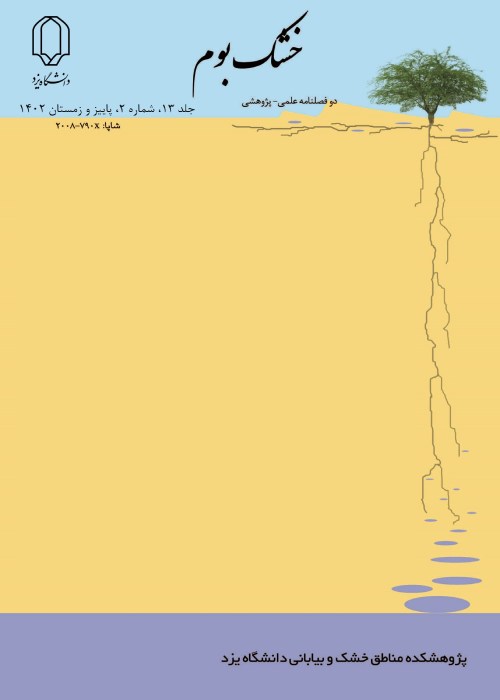The effect of the cultivation system on the morphological, physiological and biochemical characteristics of lemongrass (Cymbopogon citratus)
The scarcity of cultivable land for medicinal plant growth in arid regions has resulted in the excessive utilization of pasture plants for medicinal applications. The objective of this study was to investigate the potential of hydroponic and aquaponic systems as alternative approaches for cultivating lemon grass (Cymbopogon citratus). thus, an experiment based on a completely randomized design with five repetitions was conducted in Yazd University and the impact of three different cultivation systems (hydroponic, aquaponic, and soil) on the different characteristics of lemongrass were determined. The results demonstrated a significant impact of the cultivation systems on various morphological attributes of the plant including root length, stem diameter, height, and total plant dry biomass. The hydroponic system improves these aforementioned characteristics by 133%, 33.3%, 40.9%, and 56.5%, respectively, when compared to traditional soil planting methods. The aquaponic was found to be ranked lower than the hydroponic system, but it demonstrated a significant improvement in the investigated traits when compared to soil bed cultivation. The influence of different culture systems on the concentration of macro and microelements (excluding potassium) in the aboveground part of the plant was found to be statistically significant. The hydroponic system exhibited the highest nitrogen concentration, while the highest levels of phosphorus and magnesium were observed in the aquaponic system. Conversely, the soil cultivation system displayed the highest concentrations of calcium, sodium, iron, and zinc. Furthermore, the culture medium had a significant impact on the levels of chlorophyll, protein, fat, fiber, and ash in the plant. However, the investigated treatments did not show any significant influence on the concentration of the plant's proline and carbohydrates. Overall, the findings of this study demonstrate the significant impact of three examined cultivation systems on the morphological, physiological, and biochemical attributes of lemongrass as a medicinal plant. Moreover, the potential utilization of hydroponic and aquaponic beds as viable alternatives for cultivating this plant in arid regions is indicated. However, it is necessary to investigate the economic aspects of lemongrass plant production in the mentioned systems as well as the effect of planting substrate on the secondary compounds of this plant in future research.
- حق عضویت دریافتی صرف حمایت از نشریات عضو و نگهداری، تکمیل و توسعه مگیران میشود.
- پرداخت حق اشتراک و دانلود مقالات اجازه بازنشر آن در سایر رسانههای چاپی و دیجیتال را به کاربر نمیدهد.



